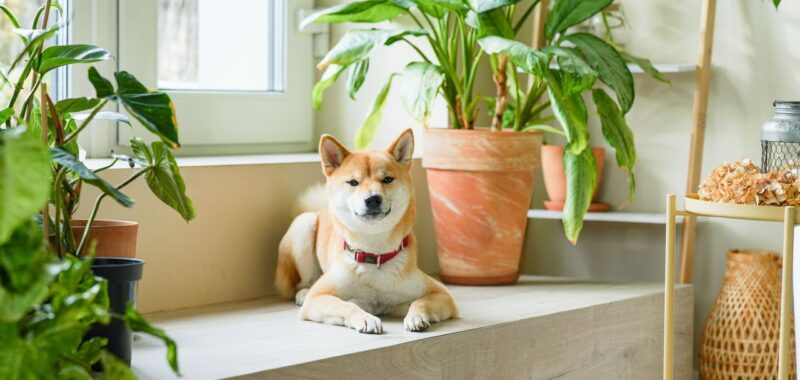There are two things we love deeply in life: plants and pets. So that’s why we’re on the lookout for pet-friendly plants that won’t threaten your fur babies if they take a nibble. For the uninitiated, yep, certain plants can be toxic to pets when ingested, sometimes causing seizures, tremors, or worse. Even the most well-behaved animals are bound to take a bite of a houseplant at some point, so we reached out to New Jersey veterinarian Judy Morgan for her advice on how to select ones that won’t harm the four-legged friends in our lives. We also chatted with Paris Lalicata, head of plant education and community at The Sill, who offered useful insight about the advantages of the plants on this list.
Since we strongly endorse adding greenery to your home to clean your air and improve your mood while also making sure your furry friends are safe and sound, we’ve gathered 28 of our favorite pet-safe plants that are kosher for cats and dogs. We also included all of the tips you’ll need to keep your new pet-friendly plants happy in your home environment.
PS: If you’re ever curious as to whether a certain indoor plant is a safe investment for your home, the ASPCA also has an extensive list of plants to avoid (including both indoor and outdoor plants). And if you already have an idea of which plants you want in your space, look for their names in the guide below for some helpful hints on how to tend to them.
1. Chinese Money Plant (Pilea peperomioides)
Pros:
- Fun, unique foliage
- Rewarding to grow
Cons:
- Tend to grow asymmetrically unless you’re diligent about rotating them
The Chinese money plant is nontoxic, quirky, and it sprouts babies like nobody’s business. And guess what? Those babies are called “pups.” How charming. The coin-like leaves are waxy and shiny and are perfectly satisfied in medium to bright light. And when you see the pups starting to pop up, propagate them and give them to your friends.
Care instructions:
Water your pilea every week or two, and rotate it 180 degrees every time you water so it grows more symmetrically.
Back to top
2. Money Tree (Pachira aquatica)
Pros:
- Hardy, resilient plants
- Fast growers
Cons:
Legend has it, money tree plants bring good luck and good fortune to anyone whose space they inhabit, which makes them excellent housewarming gifts for all of your friends. “The money tree is prized for its vibrant green leaves and braided trunk that is believed to bring good luck to its owner,” Lalicata confirms. “It’s also a low-maintenance companion, thriving in indirect light and the occasional watering.”
Care instructions:
Money trees are quite resilient, so if your cat swats at it or your dog’s tail knocks it off its perch, it’ll be just fine. Place yours in medium to bright indirect light and water it every one or two weeks.
Back to top
3. Hoya varieties
Pros:
- Many varieties of all different shapes, sizes, and colors to choose from
- Resilient
Cons:
Hoyas, with their thick leaves and woody stems, make lovely additions to any higher-light rooms in your home. There are dozens of varieties to choose from, and all of them should be treated more like succulents than your traditional leafy houseplants. We’re partial to the hoya carnosa for its splashes of pink, white, and red in the developing leaves. You can also find heart-shaped hoyas, varieties with skinny, tubular leaves (called Hoya linearis), and even hoyas with curly leaves that look almost like ribbons.
Care instructions:
If your hoya is in a bright corner, it will need more frequent watering. Hoyas can tolerate low light, but they will grow much faster (and variegated varieties will have more vibrant color) in higher light situations. That said, if your hoya is in a low light area, it only needs watering about once per month. If the leaves begin to feel thin, look wrinkly, and have lost their slight sheen, it’s time to water.
Back to top
4. Rattlesnake Plant (Calathea lancifolia)
Pros:
- Beautiful, wavy leaves
- Easy to tell when they need care
Cons:
- On the finicky side when it comes to light and watering schedule
With wavy, polka-dotted leaves, bold colors, and an easy watering schedule, the rattlesnake plant (a.k.a. Calathea lancifola) a great addition to a low-light living room. “Much like other prayer plants, their dramatic, patterned leaves ‘dance’ as they move up and down in response to light, a phenomenon known as nyctinasty,” explains Lalicata. Can you imagine that funky purple on the undersides of the leaves against your midcentury chair? We can.

